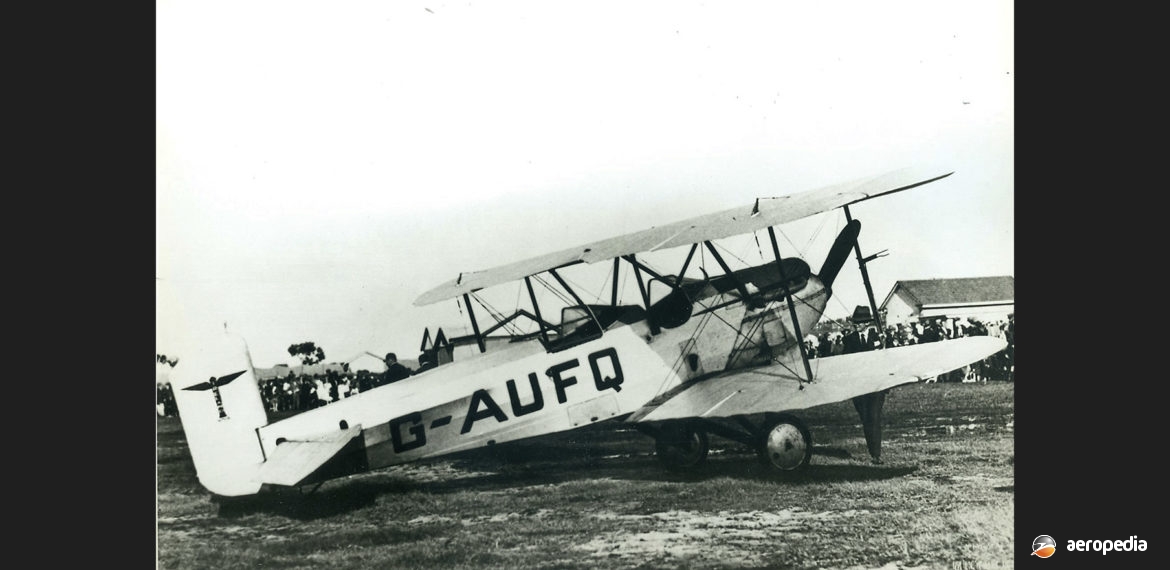Photograph:
Ireland Meteor G-AUFQ (c/n M.8) at Mascot, NSW in 1928 (Frank Walters collection)
Country of origin:
United States of America
Description:
Four-seat touring biplane
Power Plant:
One 67 kw (90 hp) Curtiss OX-5 eight-cylinder VEE liquid -cooled engine
Specifications:
- Wingspan: 9.44 m (31 ft)
- Length: 7.31 m (24 ft)
- Height: 2.77 (9 ft 1 in)
- Wing area: 26.47 m² (285 sq ft)
- Max speed: 159 km/h (99 mph)
- Landing speed: 68 km/h (42 mph)
- Climb to 1,524 m (5,000 ft): 14 mins 30 secs
- Cruising range: 6 hours
- Empty weight: 568 kg (1,253 lb)
- Useful load: 413 kg (910 lb)
- Wing loading: 7.6 lb/sq ft
- Power loading: 24 lb/hp
- Loaded weight: 981 kg (2,163 lb)
History:
After a period of production of the Comet, Mr Ireland changed the design to seat four and the new aircraft became known as the Meteor. Produced from 1926 as an efficient four-seat commercial biplane, and fitted with the 67 kw (90 hp) Curtiss OX-5 engine, it had a fuselage of fabric covered steel-tube construction. It was of rectangular section in the area of the cockpits and gradually changed to a triangular section towards the tail. There were two open cockpits, the pilot in the front with one passenger, the rear cockpit accommodating two passengers side-by-side. A baggage compartment was available with room for two suitcases; and, if desired, the rear cockpit could be used as a mail compartment.
The engine-mounting was quickly detachable, and provision was made for the installation of the Curtis C-6 engine, or the 134 kw (180 hp) Hispano Suiza. It was proposed at one stage that the 149 kw (200 hp) Wright Whirlwind radial engine might be substituted. The wings were un-staggered, single-bay type. With the C-6 engine max speed was 193 km/h (120 mph); and with the Whirlwind engine it was expected to attain 208 km/h (129 mph) and climb at 389 m/min (1,275 ft/min).
One Meteor was imported to Australia. This machine G-AUFQ (c/n M.8) was registered in May 1927 to Mr S L Tyler of Sydney, NSW, ownership being transferred in 1928 to Mr L L Nall, also of Sydney. In 1929 it became VH-UFQ and was entered in the 1929 East-West, Sydney to Perth Air Race (2,390 km/1,485 miles) to commemorate Western Australia’s centenary celebrations. It was flown by Messrs Leggatt and Nall. It suffered a mishap during the race when it was forced down at Longswood, VIC 122 km (76 miles) from Melbourne,VIC due to a fuel shortage.
Two sections were available for entry, handicap and speed sections. There were 30 entries. The eventual winner was a DH.9 (G-AUHT) flown by Capt H C “Horrie” Miller and Major Hereward de Havilland. A DH.60 Moth (VH-UIQ) won the speed section. At the time of the race VH-UFQ had a raised rear decking which continued forward and fully enclosed both cockpits. The machine was struck off the register in June 1931, having crashed at Mascot, NSW on 17 January that year.
After producing the Meteor, Mr Ireland changed the name of the company to Ireland Aircraft Inc and commenced production of the Neptune, an amphibian seating five; and the Privateer, also an amphibian, seating two. In 1930 the company was re-organised and became Amphibians Inc but only survived for a short period.

